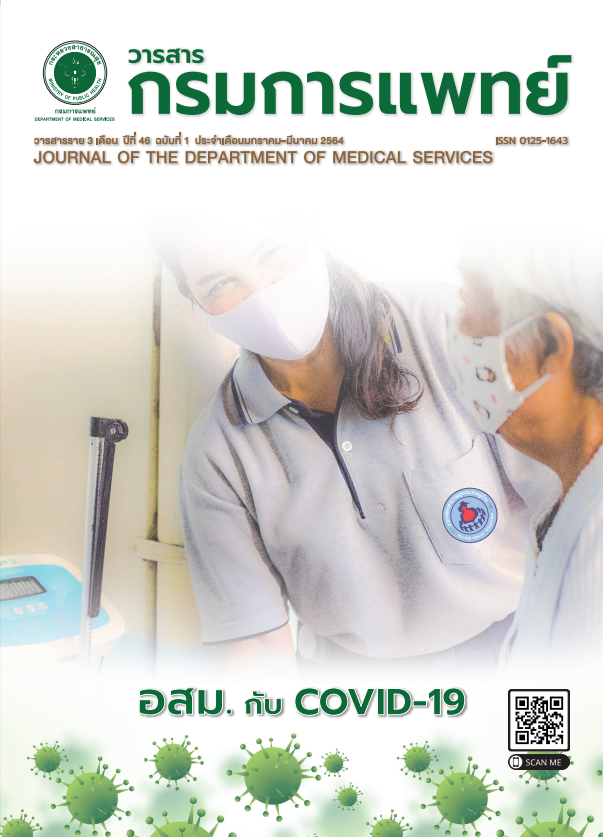Development of an Effectiveness Model of Caring Delayed Speech Child from Electronic Screen Media Using Buddhist Psychological Program of Behavior Modification
Keywords:
Delayed speech child, Electronic screen media, Buddhist psychology, Psychological electronic mediaAbstract
Background : Delayed speech in children results from the problem of modern-day parenting. Thus, the development of speech model is created in order to improve parenting, as well as children’s speech development. The model consists of a Buddhist psychological program which integrates Buddhist ethics and psychological theories in the program activities.
Objectives : 1) To study and use the condition of raising children with slow speech from parents who provided their children with electronic media as a case study. 2) To study the effectiveness of raising slow-talking children via electronic media of Buddhist program of behavioral adaptation 3) To present an effectiveness of parenting delayed speech children from using electronic media with Buddhist behavior modification program.
Methods : A mixed research with multiple research methods was conducted. The research was divided into 3 phases. The first phase consisted of selecting a specific group of Buddhist scholars, developmental-behavioral pediatricians, nurses, speech practitioners, occupational therapists, and psychologists. This selected group was able to provide key information. The selection method used consisted of 1) interview questions 2) child development screening form from the Department of Mental Health. Phase 2 consisted of a sample group of parents of the pediatric patients, 32 in total. The research methods involved using the Buddhist psychological program of behavior modification developed from the first phase, and measurement of speech behavior of children. The third phase was a topographic sampling record from parents of 100 children who came to the Queen Sirikit National Institute of Child Health in 2019. The data were collected by using the assessment to measure the effective of parenting by those using the Buddhist psychology program for behavioral modification among slow speech children via electronic media. The data were then taken for analysis.
Results : 1) Mean score and percentage of improvement in effective parenting of slow speech children by using the Buddhist program of behavioral adaptation were statistically higher than pre-treatment at the .05 level, which was a good overall result. 2) After the experiment, more children passed the evaluation criteria of the Speech Behavior Scale. The post-test scores were significantly higher than those of the pre-test by .05 level. 3) Model development was consistent with the empirical data (p = 0.89).
Conclusion : Parenting with the use of effective model for delayed speech children via electronic media with a Buddhist behavioral adaptation program resulted in a better child development.
References
National Statistical Office, Thailand. Exploring the situation of children and women in Thailand 2015-2016,Bangkok: National Statistical Office; 2016.
Setharuk Tunjareanwoog A, Phukderonchit S, Sewatathitikun Y. Screen Behaviour of Thai Toddlers Aged 0 - 3 years in Bangkok.The Journal of Social Communication Innovation 2018; 6: 60-9.
Hutchison A, Reinking D. Teachers’ Perceptions of Integrating Information and Communication Technologies Into Literacy Instruction: A National Survey in the United States. Reading Research Quarterly 2011; 46: 312-333.
Saensumdang R, Babprasert S, Raksapakdee C, Aukum S, New media: Dietary supplement for preschool children. Journal of Graduate School Sakon Nakhon Rajabhat University 2017; 14:9-13.
Phanomchoeng S. Factors related with children delayed speech at department of outpatient pediatric clinic and “well baby”clinic in department of health promotion, Banglamung hospital.Thai journal of pediatrics 2013;52: 44-55.
Losatiankit P. Delayed Speech Child. Thai journal of pediatrics 2007; 26: 240-6.
Aarnoudse-Moens CSH, Weisgias-Kuperus N, Bernard van Goudoever J, Oosterlaan J. Meta-Analysis of neurobehavioral outcomes in very preterm and/ or very low birth weight children. Pediatrics 2009; 124: 717-28.
Grantham-McGregor S, Cheung YB, Cueto S, Glewwe P, Richter L, Strupp B, et al. Developmental potential in the first 5 years for children in developing countries. Lancet 2007; 369: 60–70.
United Nations. A World Fit for Children adopted by the UN General Assembly at the 27th. Special Session of the UN General Assembly; 2002.
Zimmerman FJ, Christakis DA, Meltzoff AN. Associations between media viewing and language development in children under age 2 years. J Pediatr 2007; 151: 364-71.
Strasburger VC, Jordan AB, Donnerstein E. Children, adolescents,and the media: health effects, Pediatr Clin North Am 2012; 59:533-87.
Noel M, Peterson C, Jesso B. The relationship of parenting stress and child temperament to language development among economically disadvantaged preschoolers. Journal of Child Language2008; 35: 823-43.
Tomopoulos S, Dreyer BP, Berkule S, Fierman AH, Brockmeyer C, Mendelsohn AL, et al. Infant media exposure and toddler development. Arch Pediatr Adolesc Med 2010; 167: 1105-11.
Belsky J, Bell B, Bradley RH, Stallard N, Stewart-Brown SL, et al.Socioeconomic risk, parenting during the preschool years and child health age 6 years. Eur J Public Health 2006; 17: 508–13.
Jariyatatkorn K. The Role of Parent in Enhancing Moral and Ethical Aspects to Early Childhood Children. Bangkok: Suan Dusit Rajabhat University; 2007.
Chanthapreeda N. Development Guideline for Promotion of newborn to two years in Early Childhood Centers: Case Study Early Childhood Centers, Konkan. Thesis, Ph.D. (Nursing Science).Konkan: Graduate School,Konkan University; 2006
Downloads
Published
How to Cite
Issue
Section
License

This work is licensed under a Creative Commons Attribution-NonCommercial-NoDerivatives 4.0 International License.
บทความที่ได้รับการตีพิมพ์เป็นลิขสิทธิ์ของกรมการแพทย์ กระทรวงสาธารณสุข
ข้อความและข้อคิดเห็นต่างๆ เป็นของผู้เขียนบทความ ไม่ใช่ความเห็นของกองบรรณาธิการหรือของวารสารกรมการแพทย์


